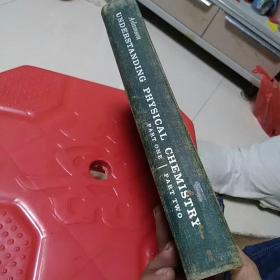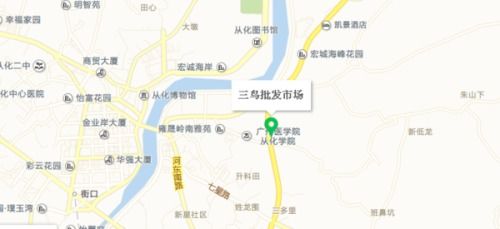Understanding Textile Physical Testing Standards:A Comprehensive Guide
This comprehensive guide provides an in-depth understanding of textile physical testing standards. It covers a wide range of topics, including the definition and purpose of these tests, the various types of tests available, the equipment required for each type of test, and the interpretation of results. The guide also includes tips on how to prepare for and conduct these tests effectively, as well as some common pitfalls to avoid. With its thorough and practical approach, this guide is an essential resource for anyone working with textile materials or seeking to improve their understanding of these important tests.
Introduction to Textile Physical Testing Textiles, such as clothing, carpets, and upholstery, are an integral part of our daily lives. They not only serve a functional purpose but also contribute to the aesthetic appeal and comfort of our surroundings. To ensure that textiles meet the needs and expectations of their intended users, rigorous physical testing is essential. This guide will provide an overview of the key textile physical testing standards and methods, including their applications, advantages, and limitations.
Tensile Testing Tensile testing measures the strength and resilience of textiles under tension. It involves pulling a sample material until it breaks or reaches a certain breaking elongation. The results of this test can indicate the fabric's resistance to tearing, wear, and tear-resistant properties.

Advantages: Tensile testing provides a quantitative measure of the material's strength, allowing manufacturers to optimize its design and production process. Limitations: The test may not fully capture the material's overall performance in real-world conditions, such as its flexibility and recovery after being stretched.
Elongation Testing Elongation testing evaluates the ability of textiles to stretch and recover their original shape after being subjected to force. This test is crucial for assessing the elasticity and durability of fabrics used in sportswear, swimwear, and other dynamic applications.
Advantages: Elongation testing helps identify materials with high elasticity and resilience, making them ideal for applications where flexibility is important. Limitations: The test may not fully represent the fabric's performance in harsh environments or over long periods, such as when exposed to heat or chemicals.
Tear Testing Tear testing simulates the breaking of textiles under tension, specifically measuring the amount of material that breaks during the test. This method is commonly used to evaluate the tear resistance of apparel, such as jeans and trousers.
Advantages: Tear testing provides a direct measurement of the fabric's strength against tearing, enabling manufacturers to improve their products for improved durability and safety. Limitations: The test may not accurately reflect the fabric's performance in real-world use, especially if it is subjected to sudden impacts or heavy loads.
Water Absorption Testing Water absorption testing measures how much water a textile can hold before it swells and loses its shape or weight. This test is crucial for assessing the moisture-wicking capabilities of fabrics used in sportswear, outdoor clothing, and bedding.
Advantages: Water absorption testing helps identify materials with excellent breathability and moisture management, enhancing their comfort and performance in various applications. Limitations: The test may not fully capture the fabric's ability to retain moisture and dry quickly after exposure to moisture.
Flammability Testing Flammability testing evaluates the ability of textiles to resist burning by measuring the time required for a flame to penetrate through the material. This test is critical for assessing the safety of clothing, such as firefighting gear and protective clothing.
Advantages: Flammability testing ensures that textiles are safe to use in potentially hazardous environments, protecting both individuals and property from fire accidents. Limitations: The test may not fully represent the fabric's performance in extreme temperatures or humidity conditions, which can affect its flammability.
Dyeability Testing Dyeability testing determines how well a textile can absorb and release dyes during the manufacturing process. This test is crucial for assessing the quality and consistency of printed or dyed fabrics used in garments, upholstery, and home decor.
Advantages: Dyeability testing ensures that fabrics have consistent colorfastness and brightness, enhancing their visual appeal and longevity. Limitations: The test may not fully capture the fabric's performance in real-world use, especially if it is subjected to harsh chemicals or environmental factors that can affect the colorfastness of dyes.
Structural Strength Testing Structural strength testing evaluates the overall stability and integrity of textiles. This test involves assessing the fabric's ability to withstand external forces, such as compression, tension, and bending, without breaking or losing its shape.
Advantages: Structural strength testing ensures that textiles are durable and reliable, providing long-lasting performance in various applications. Limitations: The test may not fully capture the fabric's performance in real-world use, especially if it is subjected to sudden impacts or heavy loads.
Environmental Impact Assessment (EIA) Environmental Impact Assessment (EIA) is a comprehensive evaluation of a product's environmental footprint, including its raw materials, manufacturing processes, packaging, and disposal. This test is crucial for identifying ways to minimize the environmental impact of textiles and promote sustainable practices.

Advantages: EIA helps manufacturers identify areas where they can reduce waste and emissions, leading to more eco-friendly products and practices. Limitations: The test may not fully capture the fabric's performance in real-world use, especially if it is subjected to harsh chemicals or environmental factors that can affect its sustainability.
Case Study: Tencel - Sustainable Alternative to Cotton Tencel is a plant-based fiber made from wood pulp that has gained popularity in recent years due to its sustainability and eco-friendliness. In a case study, researchers evaluated the mechanical properties and environmental impact of using Tencel in place of cotton in a t-shirt. The study found that Tencel had similar strength and flexibility to traditional cotton but was significantly less resource-intensive and produced fewer greenhouse gas emissions during the manufacturing process. This finding highlights the potential benefits of using Tencel in industries seeking to reduce their environmental footprint.
Conclusion Textile physical testing standards play a vital role in ensuring that textiles meet the needs and expectations of their intended users. By understanding the different types of tests and their respective advantages and limitations, manufacturers can optimize their products and practices to produce safer, more durable, and sustainable textiles. As technology continues to advance, it is likely that new testing methods will emerge to address specific challenges facing the textile industry. However, the importance of established testing standards remains unwavering, guiding manufacturers towards responsible and ethical practices that benefit both consumers and the planet.
随着纺织行业的快速发展,纺织品的质量和性能成为了消费者关注的焦点,为了确保纺织品的质量和可靠性,制定一套科学、规范的纺织品物理测试标准方法显得尤为重要,本文将详细介绍纺织品物理测试的标准方法,并结合实际案例进行说明。
纺织品物理测试标准方法概述
测试目的
纺织品物理测试的主要目的是检测纺织品的力学性能、吸湿性、透气性、耐热性、耐化学性等各项指标,以确保其符合相关标准和市场需求。
测试标准
(1)力学性能测试:包括拉伸强度、撕裂强度、耐磨性等。 (2)吸湿性测试:通过水分吸收速率测试,评估纺织品吸湿性能。 (3)透气性测试:通过透气率测试,评估纺织品透气性能。 (4)耐热性测试:通过耐热温度测试,评估纺织品在不同温度下的性能。 (5)耐化学性测试:通过化学试剂浸泡测试,评估纺织品对化学物质的抵抗能力。
测试方法
(1)力学性能测试:采用力学试验机进行拉伸、撕裂等力学性能测试。 (2)吸湿性测试:采用吸湿仪进行水分吸收速率测试。 (3)透气性测试:采用透气仪进行透气率测试。 (4)耐热性测试:根据不同温度下的纺织品性能变化进行记录和分析。 (5)耐化学性测试:将纺织品浸泡在化学试剂中,观察纺织品的变化情况,记录相关数据。
实际案例说明
纺织品吸湿性能测试

某品牌纺织品在进行吸湿性能测试时,采用了吸湿仪进行水分吸收速率测试,具体步骤如下:
(1)准备样品:选择符合要求的样品进行吸湿性能测试。 (2)设置参数:根据样品特性设置吸湿仪的参数。 (3)测试过程:按照吸湿仪的操作规程进行测试,记录数据。 (4)结果分析:根据测试数据进行分析,得出该品牌纺织品的吸湿性能指标。
纺织品耐热性测试案例
某公司对其生产的纺织品进行了耐热性测试,具体步骤如下:
(1)准备样品:选择符合要求的样品进行耐热性测试。 (2)设定温度范围:根据纺织品的应用场景设定耐热温度范围。 (3)进行耐热温度测试:使用耐热温度计对样品进行耐热温度测试。 (4)结果记录与分析:根据测试数据记录和分析,得出该纺织品在不同温度下的性能指标。
补充说明与表格展示
以下是补充说明与表格展示的部分内容:
补充说明部分:
- 补充术语解释:在介绍过程中补充相关的术语解释,如“力学试验机”、“吸湿仪”、“透气仪”等。
- 案例展示与数据展示:结合实际案例展示吸湿性能测试和耐热性测试的具体数据,以便读者更好地理解和应用这些标准方法,可以展示吸湿仪的测量范围、精度等参数。
表格展示部分:
| 项目 | 描述 | 示例数据 | 参考标准 |
|---|---|---|---|
| 测试目的 | 检测纺织品的各项物理性能 | 力学性能、吸湿性、透气性等 | 根据行业标准或国家标准 |
| 测试标准 | 根据不同项目制定具体的标准 | 根据具体项目选择相应的标准和方法 | 根据行业标准或国家标准进行制定 |
| 力学性能测试方法 | 使用力学试验机进行拉伸、撕裂等力学性能测试 | 根据样品特性设置参数,按照操作规程进行操作 | 按照行业标准或国家标准进行操作 |
| 吸湿性测试方法 | 采用吸湿仪进行水分吸收速率测试 | 根据样品特性选择合适的吸湿仪,设置合适的参数 | 根据行业标准或国家标准进行选择和使用 |
| 透气性测试方法 | 使用透气仪进行透气率测试 | 根据样品特性设定合适的透气率范围和测量参数 | 根据行业标准或国家标准进行设定和操作 |
| 耐热性测试方法 | 根据不同温度范围设定耐热温度范围并进行记录和分析 | 根据样品特性设定合适的耐热温度范围和测量参数 | 根据行业标准或国家标准进行设定和记录分析 |
| 其他注意事项 | 在进行纺织品物理测试时应注意安全、环保等事项 | 无具体要求,但应遵循相关标准和安全规范 | 根据实际情况和标准要求进行操作和管理 |
总结与建议
本文介绍了纺织品物理测试的标准方法,并结合实际案例进行了说明,在实际应用中,应结合具体情况选择合适的测试方法和标准,以确保纺织品的质量和可靠性,应注意安全、环保等事项,遵循相关标准和安全规范进行操作和管理,希望本文能为相关领域的研究和实践提供有益的参考和帮助。
Articles related to the knowledge points of this article:
Embracing the Future:The Innovative Services in Yixing Textiles
The Story of Dongguan Dailong Tianyu Textile Wholesale



